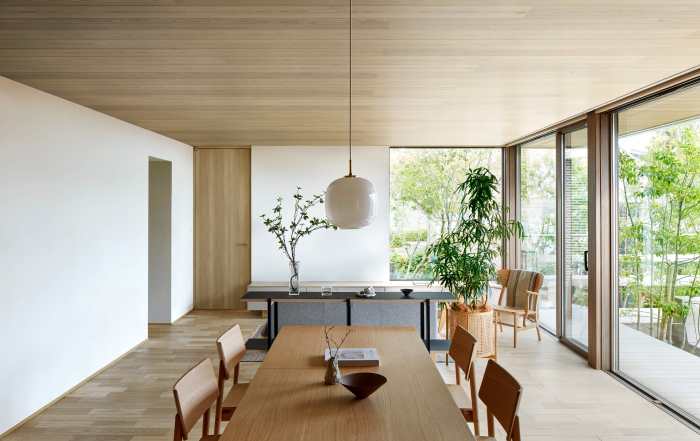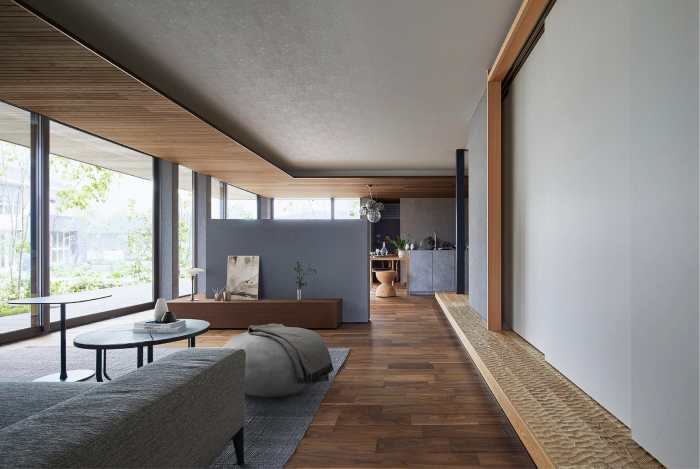Exploring Interior: Creating Functional and Aesthetically Pleasing Spaces

Embark on a journey into the world of interior design, where functionality meets aesthetics to transform ordinary spaces into extraordinary ones. From color schemes to furniture selection, uncover the key elements that shape the ambiance of any room.
Delve deeper into the realm of interior design and discover the art of creating captivating spaces that resonate with style and purpose.
Interior Design

Interior design plays a crucial role in creating functional and aesthetically pleasing spaces. It involves the art and science of enhancing the interior of a building to achieve a healthier and more aesthetically pleasing environment for the people using the space.
Key Elements to Consider in Interior Design
- Space Planning: Proper utilization of space to ensure functionality and flow within the room.
- Lighting: Adequate lighting can enhance the mood and ambiance of a space, as well as highlight key features.
- Furniture Selection: Choosing the right furniture pieces that not only fit the space but also complement the overall design aesthetic.
- Texture and Patterns: Incorporating different textures and patterns can add depth and visual interest to the room.
- Accessories and Decor: Adding accessories such as artwork, rugs, and plants can help tie the room together and add personality.
Impact of Color Schemes on Interior Spaces
Different color schemes can have a significant impact on the mood and ambiance of a space:
- Neutral colors like white, beige, and gray can create a sense of calm and openness in a room.
- Warm colors like red, orange, and yellow can add energy and warmth to a space, making it feel cozy and inviting.
- Cool colors like blue, green, and purple can evoke a sense of tranquility and serenity, perfect for creating a relaxing atmosphere.
- Complementary color schemes, where colors opposite each other on the color wheel are used, can create a vibrant and dynamic look.
- Monochromatic color schemes, using variations of a single color, can create a harmonious and sophisticated feel in a room.
Interior Decorating

Interior decorating focuses on the aesthetic appeal and functionality of a space, complementing the interior design. While interior design involves the overall layout, structure, and flow of a room, interior decorating involves adding finishing touches to enhance the space.
Accessorizing and Styling Tips
Accessorizing and styling different areas within a room can truly elevate its overall look and feel. Here are some tips to help you achieve a well-decorated space:
- Use a variety of textures to add depth and interest to the room.
- Layer different elements such as rugs, throw pillows, and curtains to create a cozy atmosphere.
- Include personal items like family photos or souvenirs to make the space feel more personal and inviting.
- Experiment with different color palettes to create a harmonious and balanced look.
Role of Lighting
Lighting plays a crucial role in enhancing the interior design of a space. It can set the mood, highlight key features, and create a cozy ambiance. Here are some ways to use lighting effectively:
- Utilize a mix of lighting sources such as overhead lights, floor lamps, and table lamps to create layers of light.
- Consider the functionality of the space when choosing the type of lighting - task lighting for work areas, ambient lighting for overall illumination, and accent lighting to highlight focal points.
- Opt for dimmable lights to adjust the brightness according to the time of day or desired ambiance.
Furniture Selection
When selecting furniture for a room, there are several factors to consider to ensure that the pieces not only complement the space but also meet practical needs. Factors such as size, scale, function, style, and material should all be taken into account to create a cohesive and functional design.
Comparing and Contrasting Furniture Styles
- Modern: Modern furniture is characterized by clean lines, simplicity, and a focus on function. Materials like metal, glass, and leather are commonly used in modern furniture pieces.
- Minimalist: Minimalist furniture follows the "less is more" approach, with a focus on simplicity, neutral colors, and sleek designs. Minimalist furniture often features clean lines and a clutter-free aesthetic.
- Traditional: Traditional furniture is classic and timeless, often featuring ornate details, rich colors, and elegant designs. Traditional furniture pieces are typically made from wood and showcase intricate craftsmanship.
Mixing and Matching Furniture Pieces
Creating a cohesive look in a room involves mixing and matching different furniture pieces to achieve a balanced and harmonious design. Here are some ideas on how to mix and match furniture styles:
- Choose a Dominant Style: Start by selecting a dominant furniture style for the room, such as modern, traditional, or eclectic.
- Blend Contrasting Elements: Mix furniture pieces with contrasting elements, such as pairing a sleek modern sofa with a traditional wooden coffee table.
- Consider Color Palette: Coordinate furniture pieces based on a cohesive color palette to tie the room together visually.
- Experiment with Textures: Incorporate a variety of textures, such as smooth leather, plush fabrics, and rough wood, to add depth and visual interest to the space.
- Add Accents: Use accent furniture pieces, such as statement chairs or unique side tables, to inject personality and style into the room.
Space Planning
Space planning is a crucial aspect of interior design that involves organizing and arranging furniture, decor, and other elements within a space to optimize functionality, flow, and visual appeal. It is about utilizing the available space efficiently while creating a balanced and harmonious environment.
Maximizing Space in Small Rooms or Apartments
When dealing with small rooms or apartments, it is essential to employ space-saving techniques to make the most out of the limited area. Some strategies for maximizing space include:
- Choose multi-functional furniture pieces that serve more than one purpose, such as a sofa bed or a storage ottoman.
- Utilize vertical space by installing shelves or cabinets to store items off the floor.
- Use light colors and mirrors to create an illusion of a larger space.
- Keep the space clutter-free by opting for minimalistic decor and furniture.
- Consider open-concept layouts to make the space feel more expansive.
Flow and Functionality Based on Layout and Furniture Arrangement
The layout and furniture arrangement in a space greatly impact its flow and functionality. By carefully planning the placement of furniture and considering traffic patterns, you can create a space that is both aesthetically pleasing and practical. Some tips for optimizing flow and functionality include:
- Ensure there is enough space for movement between furniture pieces to allow for easy navigation.
- Arrange furniture in a way that promotes conversation and interaction in social areas.
- Consider the placement of windows and doors when positioning furniture to maximize natural light and ventilation.
- Create distinct zones within a space for different activities, such as a reading nook or a work area.
- Balance the visual weight of furniture pieces to create a harmonious and cohesive look.
Closure
In conclusion, interior design is a powerful tool that can redefine the way we experience our surroundings. By paying attention to details like space planning and furniture selection, anyone can elevate their living spaces to new heights of sophistication and comfort.
Dive into the world of interior design and unleash your creativity today.
Popular Questions
How does color impact the mood of an interior space?
Colors can evoke different emotions and set the tone for a room. Warm hues like red and orange create a cozy atmosphere, while cool tones like blue and green promote a sense of calmness.
What is the difference between interior design and interior decorating?
Interior design focuses on the overall layout and functionality of a space, while interior decorating deals with the aesthetics and styling of that space.
How can I maximize space in a small room?
Utilize multi-functional furniture, maximize vertical space with shelves, and keep the color palette light to create an illusion of more space.

